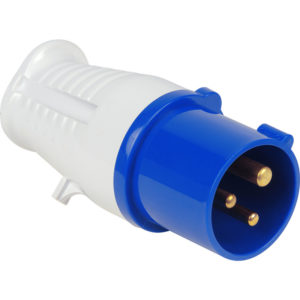Festival season is right around the corner! We’re about to head off for another year lighting the wonderful Fire in the Mountain in Wales. Some of our best and most enjoyable work has been been on outdoor events. But it hasn’t all been plain sailing.
Some lessons we’ve had to learn the hard way. Others we’ve picked up from noticing other people doing stuff badly, again and again. Here are the precautions we take to make sure the lights stay on, the band keeps playing and the cash registers keep ringing.
1. Know where the breakers are, and make friends with the site electricians
If you’re getting your power from site, you need to know: 1) where the generator is, and 2) where your breakers are. Sometimes everything just goes off. This is often because of the main breakers. If it is, you need to get the Sparks to have a look.
It helps if you’ve already made friends with them. It costs nothing to make the Sparks a cup of tea. They’re busy people, but if you’ve made an effort to get to know them, you can often skip some of the queue!
Oh, and don’t mess with their generators or breakers. It will not make them happy.
2. Designate one person to keep an eye on the diesel
If you’re running your own generator, designate someone to make sure it’s always full of fuel. You’d be amazed how easily wires get crossed over this. Don’t be another case of: “I thought you’d checked it!” “But I thought you had!” … and then everything goes dark.
3. Expect things to go wrong – make sure mission critical elements are on their own supply
Something will go wrong, it’s bound to happen at some point. Make sure when it does, essential services don’t go down too.
Front of House needs to be on its own breaker, so the whole lighting desk doesn’t lose power. And make sure the tills are on their own breaker, so people can buy beer no matter what happens.
It doesn’t really matter if a handful of lights turn off for ten minutes while you track down an issue. But if the crowd can’t get beer then they’ll leave and the bar won’t make any money. And that is a problem.
 4. Only use outdoor rated plugs
4. Only use outdoor rated plugs
The standard plug to use in outdoor settings is 16A CEEFORM. You’ll see them everywhere at outdoor events. Stick to these if you need outdoor power.
Don’t use standard 13A plugs for anything outside. They’re okay under cover, in marquees and the like. But water has a habit of running under side walls. Mini-rivers running through tents are not uncommon – so keep plugs off the floor.
5. Make sure everything you use has the correct IP rating
Every light you install outside needs to have the right IP (Ingress Protection) rating. It’s no good sticking an indoor fixture outside. For one thing, it’s dangerous. For another, it will most likely break as soon as it rains. This extends as far as PAR cans.
Also, don’t forget that your fixture is only water-tight if the cable glands are secured tightly and all the covers are correctly screwed down. A fixture’s IP rating is only as good as its glands are tight.
6. Ensure your 16A CEEFORMs are oriented horizontally
CEEFORMs need to be oriented horizontally to be waterproof. If they’re in any other orientation, water will run down the cable and fill up the plug. You can actually tell the ones that are full of water by giving them a shake and hearing water sloshing around inside.
This principle applies to all outdoor fixtures, water can run down the cable and sneak in past the gland. So make sure all glands are at the bottom of cables.
7. Be wary of the DBO button!
The DBO button is on the lighting desk. It stands for Dead Blackout. I often find myself wondering why such a button would even exist. It’s shockingly easy to slip and press it inadvertently. Or you might get a text message causing your phone to vibrate and slip down onto the button (which actually happened once during a live TV broadcast…).
In my experience, the DBO button is nearly never useful. Fortunately, you can disable it on the lighting desk. You just might save some red faces if you do!
8. Make sure you provide enough mobile phone charging points

Don’t make sockets sad, like this.
You’d be amazed to what lengths people will go to charge their phones. They’ll crawl under stages or behind bits of set to find the holy grail: a 13A plug socket. They don’t really care what they unplug, and unplug they will! Bar staff, artists, DJ’s, build crew, no one is innocent of plug-mania.
The only real way to remedy this is to make sure there are enough sockets in the green room for everyone’s chargers. I know you’re probably running short of 16A to 4-gangs as it is. But you’ll be glad you put those extra sockets in. Trust me.
We once lost an awful lot of lighting circuits in our Glastonbury field after someone ‘borrowed’ a power socket to charge their phone. Grumble!

Make them happy, like this!
9. Expect people to bring a hairdryer, or a kettle, or a coffee maker!
No matter how many “mobile phone charging only” signs you put up, someone will need to dry their hair before they go on stage. Or the stage manager will magic up a kettle out of their bum bag. Or someone (who you will equally love and loathe) will bring a coffee maker.
Things that heat stuff up draw loads of electricity. A kettle will suck up three quarters of your 16A supply, a coffee maker even more. So build in contingency. Make sure you’ve allowed an extra 13A wherever there’s a backstage facing 13A circuit you can’t afford to lose.
That way you can be sure when the coffee machine is brewing at the same time as someone is drying their hair, only the greenroom turns off. Not half of your stage.







